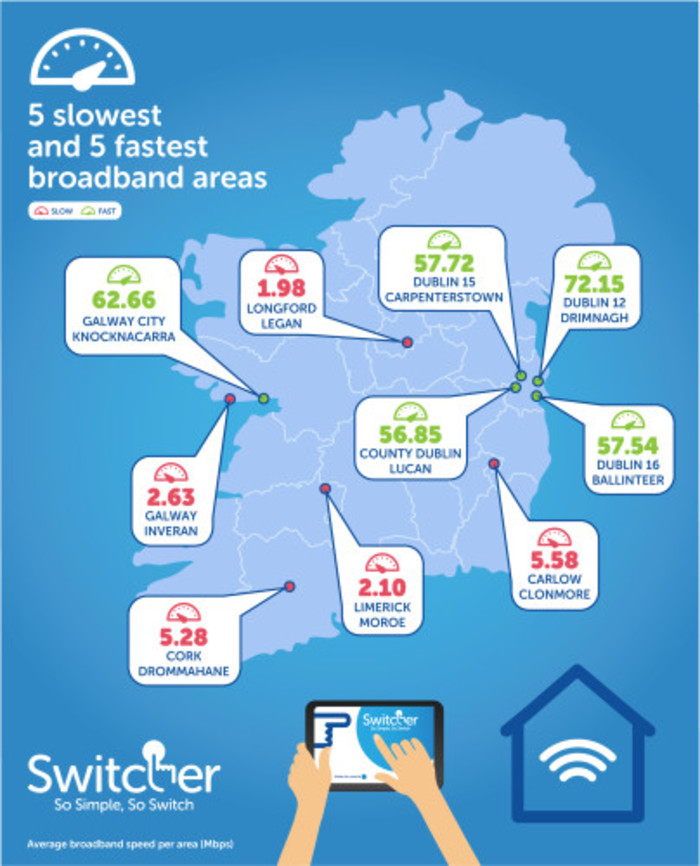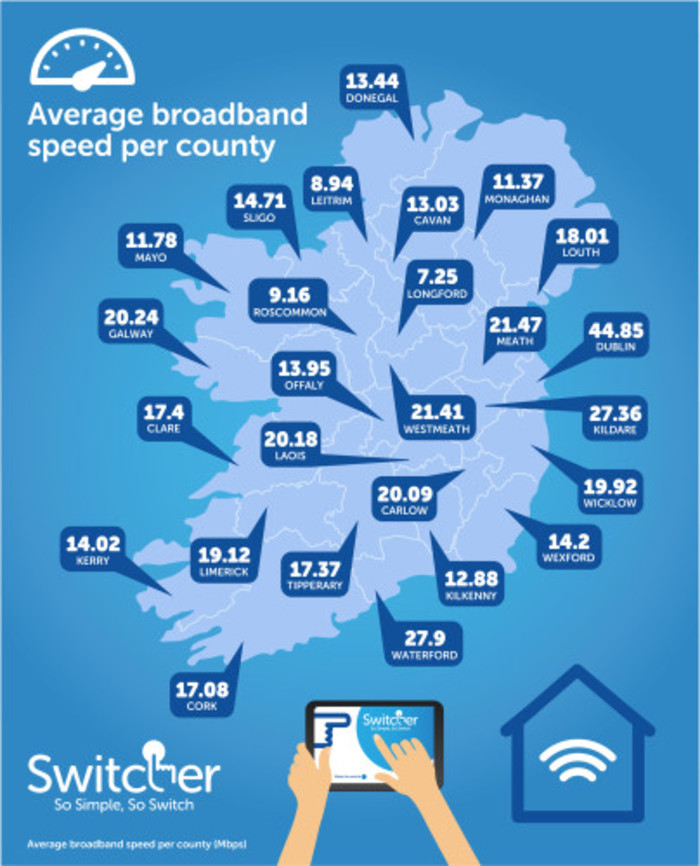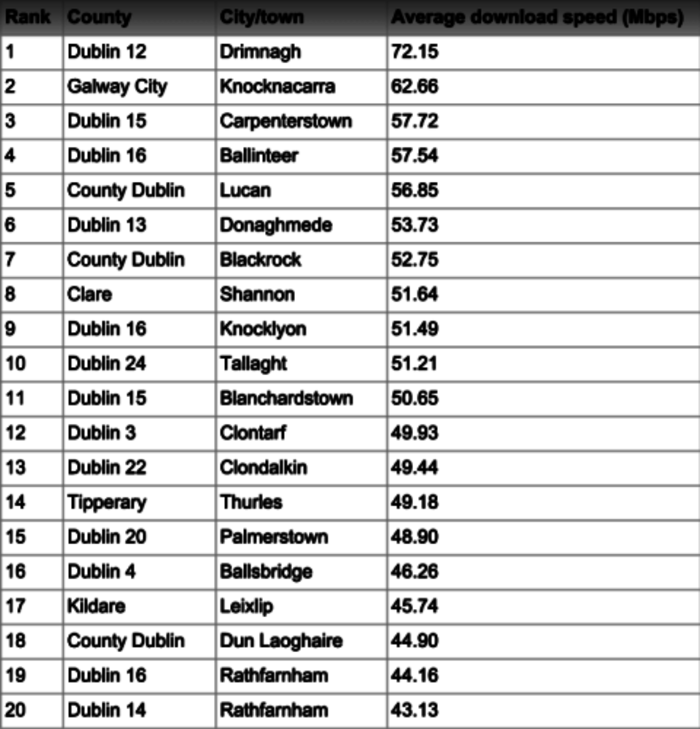Broadband in rural Ireland is up to 36 times slower than in Dublin
The issue of poor internet speeds has been highlighted as a major problem for firms in regional areas.
SOME RURAL AND regional towns experience broadband speeds up to 36 times slower than those available in major urban centres.
The data, from independent price comparison website and switching service Switcher.ie, is based on almost 27,000 consumer speed tests run by broadband users between 1 August 2015 and 31 July 2016.
The slowest broadband area is Legan in Longford, with an average download speed of 1.98 Mbps, while the fastest area is Drimnagh in Dublin 12, with an average of 72.15 Mbps.

Unsurprisingly, Dublin has the fastest average broadband speed, at 44.85 Mbps, while Longford is the slowest county, with an average broadband speed of 7.25 Mbps.
Here’s a county-by-county breakdown of broadband speeds across the country:

Highs and lows
While Longford comes out the with the slowest average speed – Leitrim, Roscommon, Monaghan and Mayo are also in the bottom five.
Out of the 20 slowest areas, four are in Cork, three are in Cavan, and two are in Galway.

For a larger image of this graph, click here.
In the highest speed list - Waterford, Kildare, Meath and Westmeath follow behind Dublin.

For a larger image of this table, click here.
The National Broadband Plan sets out that broadband with speeds of at least 30 Mbps should be available across Ireland.
However, as it stands, only 25% of the areas tested had speeds of 30 Mbps or more and completion of the national network has been pushed back as far as 2022. The average speed across all tests taken in the latest survey was 23.75 Mbps.
Meanwhile, poor internet speeds have been highlighted as a major impediment for SMEs looking to set up or expand outside Ireland's larger cities and towns.
Commenting on the data, Ciaran Barrett, from Vodafone Ireland, said:
"The Switcher.ie data on broadband speeds across the country highlight the need for equality of access to high-speed fibre broadband no matter where consumers are located."
Switcher.ie found that aside from the type of connection you have and where you live, there are a number of other factors that can affect the speeds you can achieve, for example distance from the exchange, where the router is placed within your home and even the time of day you use the internet.
Whether or not you’re connected directly to the router or using WiFi will also have an impact, as will the device you’re using.
All speed test data comes from broadband users who ran a grand total of 26,829 consumer speed tests during the 12-month period 1 August 2015 - 31 July 2016.
With reporting from Cliodhna Russell and Peter Bodkin





